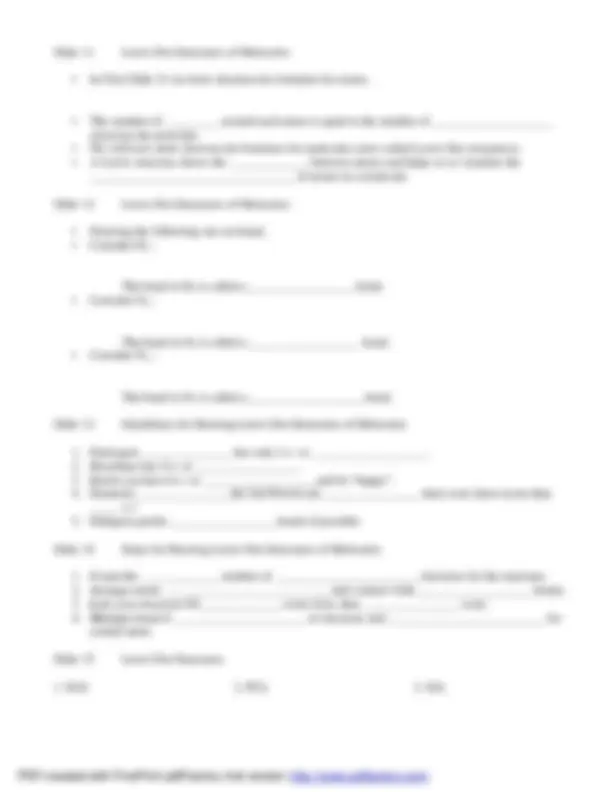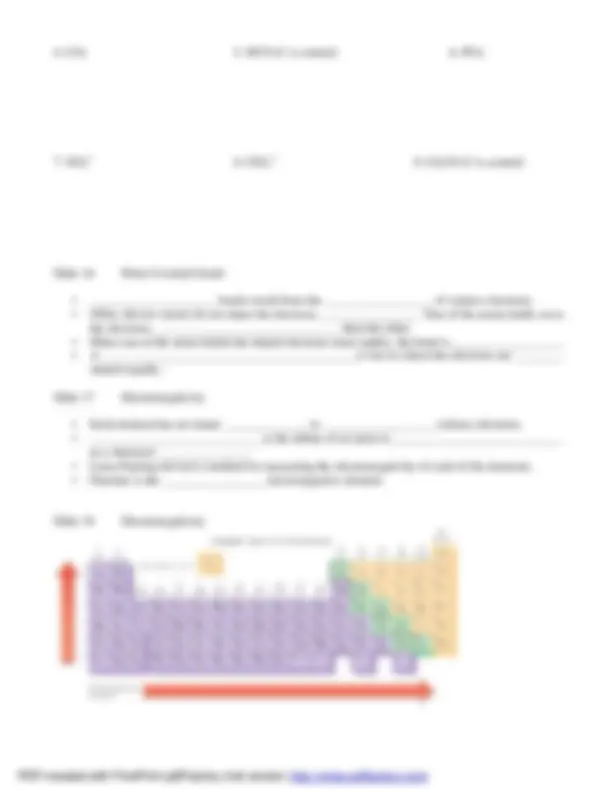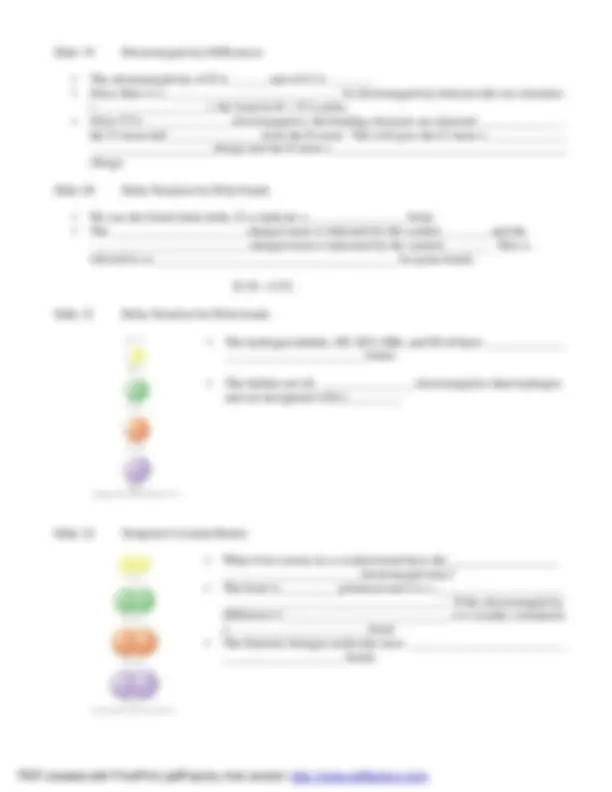





Study with the several resources on Docsity

Earn points by helping other students or get them with a premium plan


Prepare for your exams
Study with the several resources on Docsity

Earn points to download
Earn points by helping other students or get them with a premium plan
Community
Ask the community for help and clear up your study doubts
Discover the best universities in your country according to Docsity users
Free resources
Download our free guides on studying techniques, anxiety management strategies, and thesis advice from Docsity tutors
Material Type: Notes; Professor: Kelley; Class: Fundamentals of Chemistry; Subject: SCIENCE/Chemistry; University: NorthWest Arkansas Community College; Term: Unknown 1989;
Typology: Study notes
1 / 6

This page cannot be seen from the preview
Don't miss anything!




Chem 1075 Chapter 12 Chemical Bonding Lecture Outline
Slide 2 Chemical Bond Concept
Slide 3 Octet Rule
Slide 4 Types of Bonds
Slide 5 Ionic Bonds
Slide 6 Ionic Bonds
Slide 7 Formation of Cations
Slide 8 Formation of Cations
Slide 9 Formation of Anions
Slide 10 Formation of Anions
Slide 16 Polar Covalent bonds
Slide 17 Electronegativity
Slide 18 Electronegativity
Slide 19 Electronegativity Differences
Slide 20 Delta Notation for Polar bonds
δ+ H – Cl δ–
Slide 21 Delta Notation for Polar bonds
Slide 22 Nonpolar Covalent Bonds